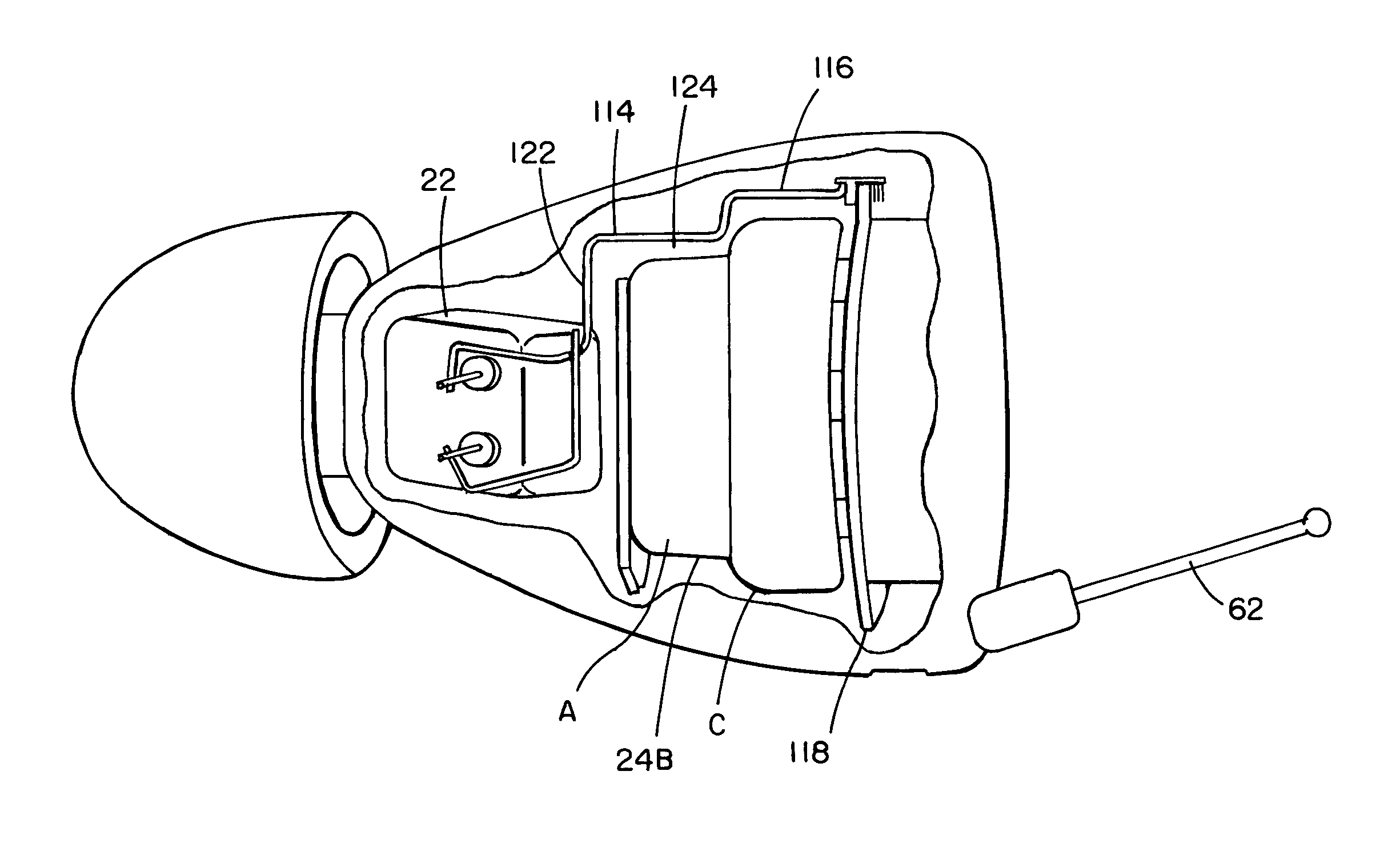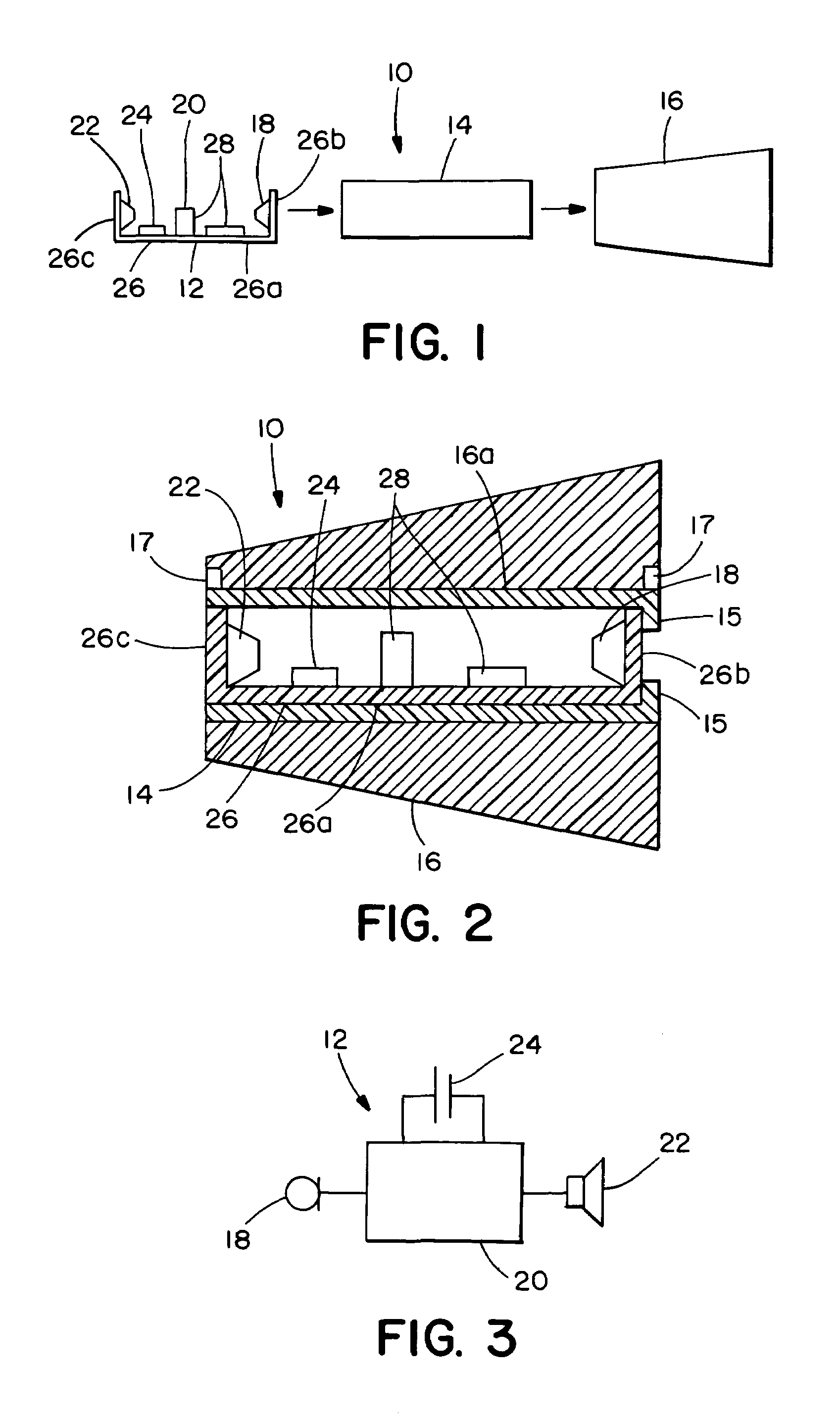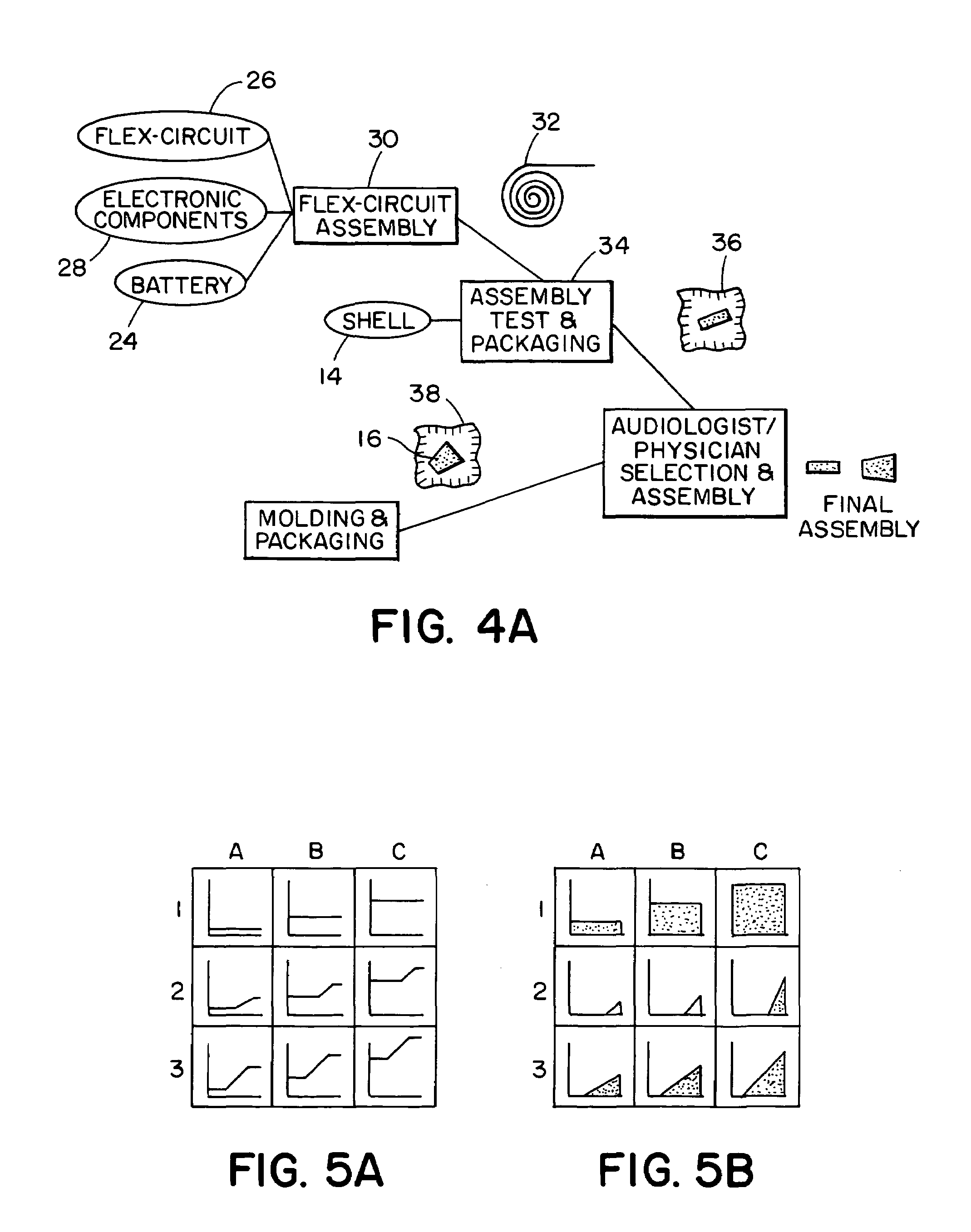Hearing aid
a hearing aid and battery technology, applied in the field of hearing aids, can solve the problems of the permanent battery of the hearing aid, and achieve the effect of prolonging the use life of the hearing aid and preventing inadvertent activation
- Summary
- Abstract
- Description
- Claims
- Application Information
AI Technical Summary
Benefits of technology
Problems solved by technology
Method used
Image
Examples
Embodiment Construction
[0054]A description of preferred embodiments of the invention follows. Referring initially to FIGS. 1 and 2 of the drawings, the hearing aid of the present invention is generally designated as 10. Hearing aid 10 comprises an electronics assembly 12, a shell 14 and an earmold 16. As shown in FIG. 3, the electronics assembly 12 includes a microphone 18, which is adapted to receive the sound and convert the sound into electrical signals. The microphone 18 is connected to the input of a signal processing circuitry 20 which amplifies the sound, diminishes any undesirable background noise and which can adjust the sound according to the particular needs of the hearing of the user. The output of the signal processing circuitry is connected to a receiver 22 which converts the output signals to sound and directs the sound into the ear of the user. A suitable battery 24 is connected to the signal processing circuitry 20 to operate the circuitry 20.
[0055]As shown in FIGS. 1 and 2, the electroni...
PUM
| Property | Measurement | Unit |
|---|---|---|
| RH | aaaaa | aaaaa |
| humidity | aaaaa | aaaaa |
| voltage | aaaaa | aaaaa |
Abstract
Description
Claims
Application Information
 Login to View More
Login to View More - R&D
- Intellectual Property
- Life Sciences
- Materials
- Tech Scout
- Unparalleled Data Quality
- Higher Quality Content
- 60% Fewer Hallucinations
Browse by: Latest US Patents, China's latest patents, Technical Efficacy Thesaurus, Application Domain, Technology Topic, Popular Technical Reports.
© 2025 PatSnap. All rights reserved.Legal|Privacy policy|Modern Slavery Act Transparency Statement|Sitemap|About US| Contact US: help@patsnap.com



